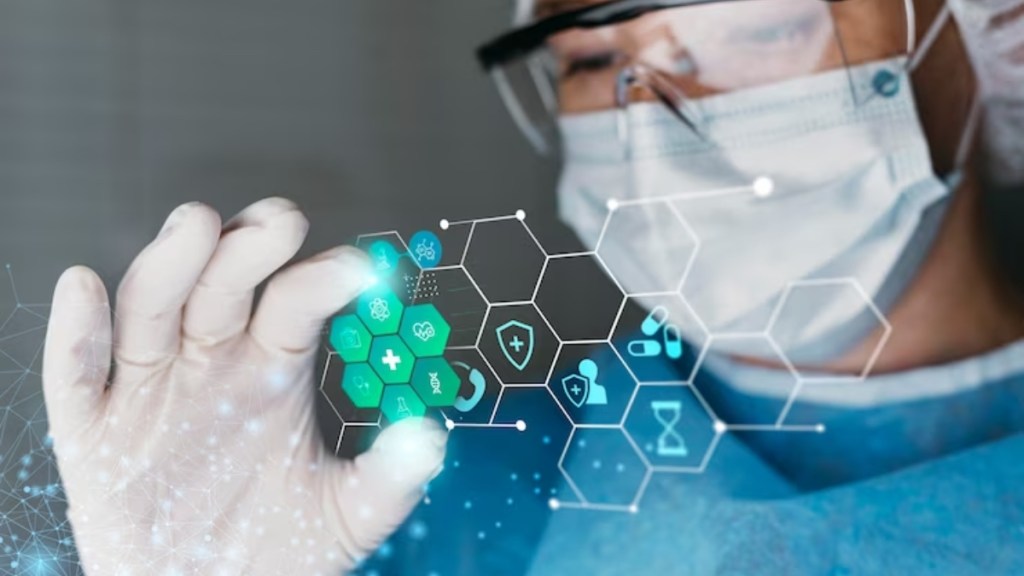By Uma Shankar
Indian healthcare stands on the threshold of exponential growth, fueled by rapid digital transformation. A recent study by the Boston Consulting Group (BCG) and B Capital predicts that digital healthcare in the country will grow tenfold to a USD 37 billion industry by 2030, with the healthcare sector as a whole growing to USD 458 billion.
Rapid digitalization, increased innovation by start-ups as well as industry incumbents, a robust funding environment, and policy support, more number of Healthcare organizations and technology partners integrating with Ayushman Bharat program, have combined to provide a strong impetus for this technological revolution in healthcare. In this context, some of the key technology trends reshaping the healthcare landscape and elevating patient outcomes bear examination.
Generative AI Elevating Efficiency and Personalization
Generative AI will have a significant impact on the healthcare sector over the next year, and beyond. The value of Generative AI lies in its ability to democratize and streamline access to a range of other AI applications. Synthetic data created by Generative AI can be leveraged to train medical algorithms without compromising patient privacy, or in the absence of relevant real-world data. The development of healthcare chatbots and virtual assistants are going to play a significant role in addressing clinician shortages and automation. Swift interpretation of results, augmenting diagnosis decisions and generation of personalized treatment plans and recommendations, will considerably enhance patient care.
Telehealth Facilitating Remote Patient Diagnosis & Monitoring
The adoption of telehealth was accelerated by the pandemic, and this trend will continue to evolve. Telehealth platforms facilitate remote consultations with healthcare providers for patients, markedly improving accessibility of healthcare. The Internet of Things (IoT) will play a significant role in these developments – with connected wearable devices enabling comprehensive remote patient diagnosis & monitoring, and effective remote delivery of more elements of care. The emergence of virtual hospital wards, i.e. a centralized hub for remote monitoring of multiple patients in their respective homes, will be the next stage of this paradigm.
Digital Twins Enhancing Processes and Outcomes
Digital twins – virtual models of real-world objects, systems or processes – will add considerable value to the healthcare domain. The technology has a wide range of applications, from virtually replicating medical devices for observation of their functioning under varied conditions, to simulating the processes of an entire healthcare facility for monitoring and assessing service delivery. Digital twins of the human body, and of individual organs, bolster personalized medicine by modelling the impact of treatment plans and lifestyle choices on individual patients. The immense capacity to optimize resources, streamline clinical workflows, and elevate decision-making processes positions digital twins as a key healthcare tool.
Robust Data Security Safeguarding Patient Privacy
Patient data security and privacy will continue to be a critical priority for the healthcare sector. Widespread digitization and the increasing prevalence of connected medical devices leaves healthcare providers at a heightened risk of cyber-attack. This necessitates the implementation of robust cybersecurity and data protection measures to govern access to confidential patient information, prevent data breaches, and ensure continuity of patient care in the event of an attack. Healthcare providers will increasingly leverage advanced AI/ML solutions as part of their security strategies. Blockchain is another key technology with significant application in the healthcare and Pharma industries, enabling tamper-proof, decentralized data storage and sharing, and elevating patient trust in the integrity of digital healthcare systems.
Healthcare Chatbots Augmenting Patient Experience & Service Delivery
Virtual healthcare assistants or chatbots serve to provide an intuitive and personalized patient experience while streamlining operations and simplifying systems. They aid clinicians by providing advice on diagnoses, treatment plans, medication, prepare medical notes summary and prescriptions. Responding swiftly to queries, and sharing relevant resources as required, healthcare chatbots empower patients to make more informed decisions about their care. These virtual assistants will increasingly interface with electronic health record (EHR) systems, facilitating seamless access to patient data by their healthcare providers. Automated appointment scheduling and ensuring patient compliance with treatment plans and lifestyle changes will also be significant use-cases.
Medical XR Reimagining Surgery and Patient Care
Medical XR (Extended Reality) – which encompasses Augmented Reality (AR) and Virtual Reality (VR) – is gaining considerable ground in the healthcare sector, with several innovative use cases coming to the fore. Surgeons will increasingly leverage AR to visualize realistic and detailed 3D models of patient’s anatomy, enhancing the precision of surgical procedures. Wound care management is another key application, with AR facilitating non-invasive assessment of the severity, healing status and optimal treatment options for a patient’s wound. VR, on the other hand, has proved highly effective in helping patients with long-term chronic pain management, leading to reduced reliance on medication and enhanced quality of life. MR innovations like HoloLens are opening up new opportunities to collaborate with Physicians beyond boundaries, preparing and modeling surgeries to avoid errors and paving ways to perform complex surgeries using Telesurgery in future.
Towards a New Digital Healthcare Paradigm
The healthcare sector is certainly poised for an era of transformative growth, bolstered by the integration of advanced digital technologies including AI/ML, IoT, and AR/VR/MR, 5G/6G and Quantum computing. Innovative digital solutions will revolutionize healthcare accessibility and efficacy and pave the way for a new paradigm of patient-centric healthcare delivery.
(The author is a Global Delivery Head – Healthcare and Life Sciences, LTIMIndtree. Views expressed are personal and do not reflect the official position or policy of the FinancialExpress.com.)







